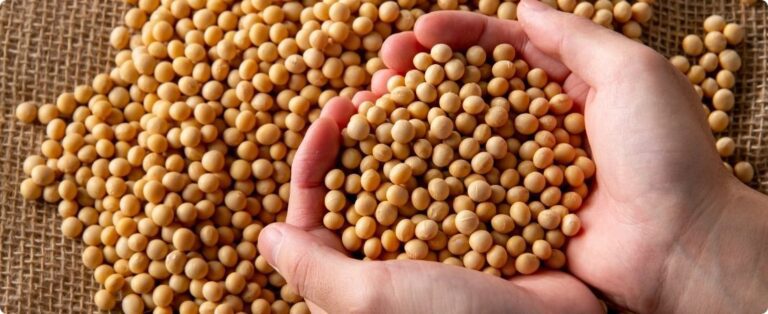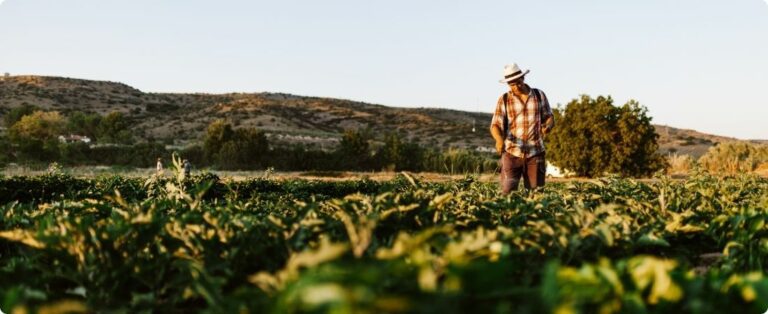
U.S. President Donald Trump’s trade war with China will create an opportunity for Brazilian agricultural exporters. They could capture an even larger share of the Chinese market, gaining ground on American farmers. However, this situation could also contribute to Brazil’s already high food inflation.
China responded quickly to the new rates imposed by the US this week. In retaliation, the Chinese government announced increases of 10% and 15% in taxes on American agricultural products. These tariffs hit a total of US$ 21 billion in US exports, including meat and soy.
Brazil as an alternative for Chinese importers
Brazil is the world's largest exporter of soybeans, cotton, beef and chicken. With the trade war, the country is expected to increase its exports to China as Chinese importers seek tariff-free alternatives.
During Trump's first term, the trade war between the US and China has hurt American farmers. US farmers have lost market share to Brazil, especially in valuable soybean exports to China.
The U.S. never regained that market share for soybeans. China continues to buy more of its agricultural imports from Brazil than it did before the first trade war, and that will likely accelerate again with the latest round of tariffs.
Impact on prices and inflation in Brazil
“Rising tensions between the US and China will likely lead China to buy more grains and proteins from Brazil, which could reduce demand for commodities and in turn prices in the US, while increasing demand and prices in Brazil,” Santander analysts said.
Brazilian soybean prices are already rising. The premium at local ports hit a season high this week, said Eduardo Vanin, an analyst at Agrinvest.
“Any additional demand from China could result in stronger exports from Brazil at healthier prices,” Itaú BBA analysts said in a note to clients.
That would support Brazilian agricultural companies such as SLC Agricola (SLCE3.SA) and BrasilAgro (AGRO3.SA). More exports would mean less domestic supply, however, and that would increase the costs of grain to feed animals for local meatpackers such as JBS (JBSS3.SA) and BRF (BRFS3.SA).
Severe pressure
A rise in food prices, however, would be bad news for Brazilian President Luiz Inácio Lula da Silva. His popularity has fallen in recent months, mainly due to high food costs.
Food and beverage prices rose by about 8% in 2024 as a whole, according to statistics agency IBGE, and in January they rose by almost 1%, marking the fifth consecutive month of increases. February data will be released next week.
Brazil's central bank, which has been raising interest rates, said higher meat prices had a significant impact on rising food costs. The bank also outlined an adverse outlook for the short term.
Vice President Geraldo Alckmin and other officials will meet with food industry leaders on Thursday as the government looks for ways to reduce food prices.
Inflation also rose in 2018-2019 as Brazil exported more agricultural products to China.
Consumer prices in Brazil ended 2018 at 3.75% and accelerated to 4.31% at the end of the following year.
Back to the future
Santander noted that the latest tariffs announced by Beijing would accelerate the long-term diversification of U.S. supplies. Despite this, these tariffs are less severe than those imposed in 2018.
Boosted demand from China would improve an already positive outlook for Brazilian agribusiness, which is seeing production of essential products reach record levels this year.
Brazil is expected to harvest a record soybean crop of around 170 million tonnes in 2024/25. Exports are expected to exceed 100 million tonnes. In addition, the beef, poultry and pork industries also forecast record production and shipments this year.
“China will try to get as much as possible from Brazil,” said Carlos Cogo of agribusiness consultancy Cogo. He added that the new tariffs would make American products even less competitive compared to Brazilian ones.
The graph has two sections. The first is a bar graph, which shows the share of Brazil and the United States in China's total agricultural imports in 2015 and 2024. The second is a line graph, which shows the evolution of agricultural imports from Brazil and the United States between 2015 and 2024.

Prime meat
Representatives of Brazilian meat producers said the shift in global trade should be positive for the South American country.
“Brazil will ultimately benefit, especially in terms of prices and profitability,” Ricardo Santin, head of meat lobby group ABPA, told Reuters.
Shares of Brazilian meatpackers and grain producers were largely flat on Thursday after rising sharply in the previous session.
Santin said gains from more exports to China, already a big buyer of Brazilian meat, would likely offset higher feed costs.
Source: Roberto Samora, Gabriel Araujo, Ana Mano, Simon Webb and Marguerita Choy | Notícias Agrícolas















